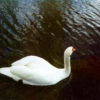Free Online Productivity Tools
i2Speak
i2Symbol
i2OCR
iTex2Img
iWeb2Print
iWeb2Shot
i2Type
iPdf2Split
iPdf2Merge
i2Bopomofo
i2Arabic
i2Style
i2Image
i2PDF
iLatex2Rtf
Sci2ools
ICCV
2007
IEEE
2007
IEEE
Contour Grouping Based on Local Symmetry
The paper deals with grouping of edges to contours of shapes using only local symmetry and continuity. Shape skeletons are used to generate the search space for a version of the Markov Chain Monte Carlo approach utilizing particle filters to find the most likely skeleton. Intuitively this means that grouping of edge segments is performed by walking along the skeleton. The particle search, which is an adapted version of a successful algorithm in robot mapping, is assisted by a reference model of a shape, which is expressed as the sequence of sample points and radii of maximal skeleton disks. This model is sufficiently flexible to represent non-rigid deformations, but restrictive enough to perform well on real, noisy image data. The order of skeleton points (and their corresponding segments) found by the particles defines the grouping.
Approach Utilizing Particle | Computer Vision | ICCV 2007 | Likely Skeleton | Markov Chain Monte | Maximal Skeleton Disks | Skeleton Points |
| Added | 14 Oct 2009 |
| Updated | 30 Oct 2009 |
| Type | Conference |
| Year | 2007 |
| Where | ICCV |
| Authors | Nagesh Adluru, Longin Jan Latecki, Rolf Lakämper, Thomas Young, Xiang Bai, Ari D. Gross |
Comments (0)

